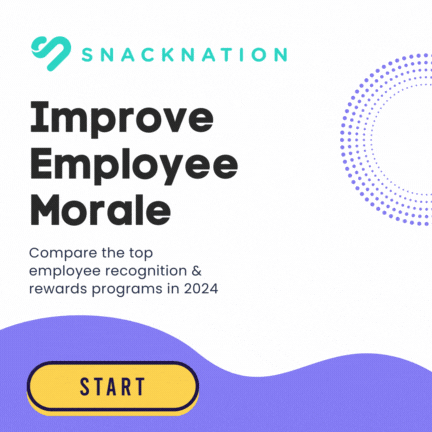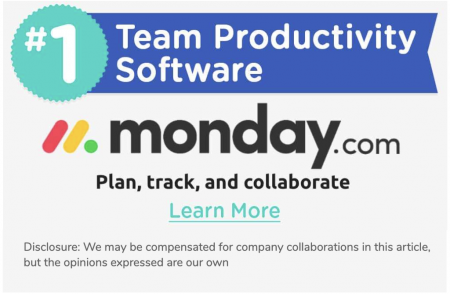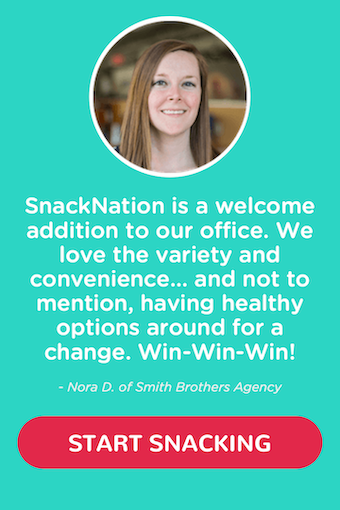Why a company exists can sometimes be difficult to pin down.
Most people in the organization can probably tell you what your business does and how it does it. But why does it exist?
That terrain is a little harder to navigate, and often hard to articulate.
But, as Simon Sinek demonstrated in his widely referenced TED talk, the best brands and most innovative companies start with Why, and let that drive their What and How.
Let’s be clear – the “Why” of your business doesn’t refer to goals like solvency or revenue generation. It’s something deeper.
It’s a purpose, a cause, or a belief that drives you forward – the thing that gets you out of bed in the morning.
Your Why might be to help people achieve something specific, to solve a particular problem for a particular community, to challenge the status quo, or even to make the world a better place.
Arming your employees with a sense of purpose is critical to creating the emotional bond between your employees and their work, and thus boosting their engagement.
Identify Your Brand’s Why
The most basic expression of the Why of your brand should be your mission statement. A mission statement is a clear, concise formulation that encapsulates the Why of your brand. Here are a few examples of mission statements that do a great job of this:
- Zappos: Deliver happiness.
- TOMS Shoes: Help provide shoes, sight, water, safe birth and bullying prevention services to people in need.
- Whole Foods: Help support the health, well-being, and healing of both people — customers, Team Members, and business organizations in general — and the planet.
- SnackNation: Inspire more conscious food decisions.
As you can see, mission statements can vary widely in scope and ambition.
Some mission statements, like Google’s, have a direct line of sight to the company’s business.
For others – like TOMS Shoes or Zappos – the connection is less obvious.
Either way, a good mission statement needs to be a clear, concise articulation of your brand’s particular “Why.”
Likewise, a company’s core values are an extension of your “Why,” a way to clarify and codify your organization’s purpose, as well as the ideal standards, methods, and practices by which you aim to achieve that purpose.
4 core values statements that inspire:
Zappos
- Deliver WOW Through Service
- Embrace and Drive Change
- Create Fun and A Little Weirdness
- Be Adventurous, Creative, and Open-Minded
- Pursue Growth and Learning
- Build Open and Honest Relationships With Communication
- Build a Positive Team Engagement and Family Spirit
- Do More With Less
- Be Passionate and Determined
- Be Humble
Toms
- Give Sustainably. Give Responsibly.
- Giving Partnerships
- Identify Communities That Need Shoes
- Give Shoes That Fit
- Help Our Shoes Have a Bigger Impact
- Give Children Shoes As They Grow
- Welcome Feedback and Help Us Improve
Whole Foods
- Selling the highest quality natural and organic products available
- Satisfying and delighting our customers
- Supporting team member excellence and happiness
- Creating wealth through profits and growth
- Caring about our communities and our environment
- Creating ongoing win-win partnerships with our suppliers
- Promoting the health of our stakeholders through healthy eating education
SnackNation
- Health above all else
- Display grit without ego
- Serve and inspire
- Seek perpetual growth
- Spread joy and optimism
The best values provide a framework for achieving the mission using methods consistent with the Why of your brand so that employees have a framework that helps them in planning, decision making, and execution of both daily and big-picture tasks.
Why Values Matter — The Inside-Out Effect of Culture
In a functional sense, your organization’s culture is the sum total of the beliefs and behaviors that guide interactions between employees and other key stakeholders, both internally and externally.
Culture manifests in observable things like hours, dress code, benefits, workspace, turnover, hiring, and customer care and satisfaction.
But culture is also something less tangible – it’s a feeling or a vibe, the mood and energy people bring in each day, the language they use, the mindset they adopt, and the methods they use to solve problems.
While culture is something that can develop organically over time as your business changes or as your company grows, the character of your culture and the pace and direction of its growth is not accidental.
As a project leader, it’s your responsibility to be a cultural steward and to set the course of that development.
The mission and values are the bedrock for your company’s culture, and are your biggest tools for steering your culture in the right direction.
Questions to assess the health of your company culture:
- Do you and your employees socialize outside of work?
- Do most of your employees have a best friend at the office?
- Are your employees more likely to accept responsibility for their mistakes or pass the blame to others?
- Are your employees likely to recommend working at your company to a friend?
- Do you observe any common bad behaviors, like employees leaving early?
- According to the most engaged companies, culture begins long before an employee sets foot in the office, and is built into the hiring process.
For passionate cultural vanguards, like Quest Nutrition President Tom Bilyeu, culture takes a front seat in the hiring process, ahead of even things like job skills or technical knowledge.
He advises managers to approach the hiring process as one might approach selecting a spouse.
For instance, he recommends socializing with candidates prior to making a hiring decision.
It’s important for you and others on your team to enjoy hanging out with a potential new team member. In fact, few things are more critical. Good cultures don’t make a distinction between“work” and “life” – rather, they understand it’s all just “life.”
By prioritizing cultural fit, companies ensure that they maintain their cultural authenticity, and ensure that they don’t lose sight of the Why of their brand as they grow.
Case Study: Zappos — Quadrupling Growth By Cultivating a Culture of WOW
For retail innovator Zappos, the Why of their brand can be summed up in a single word – happiness.
The concept of delivering happiness is the foundation of the company’s culture and values, and informs everything they do, from the way they hire to their famously responsive customer service and free shipping.
Founder Tony Hsieh arrived at this concept in a circuitous fashion. Unhappy at LinkExchange, the company he founded and sold for a nine-figure sum back in 1998, he knew he needed a change.
Fast forward to early in 2000, and Zappos was struggling to stay afloat. Low on funding and without a proper marketing budget, the company strategically focused on over-delivering on customer experience as a way to foster word of mouth.
This strategy (combined with a shift in consumer sentiment towards online retail) proved to be exactly what the business needed, and Zappos saw explosive growth. Sales hit $32 million in 2002, a 400% increase from the year before. This turn was a watershed for Hsieh.
The company focused on delivering “wow” to their customers, and made extremely attentive customer service and free shipping and returns hallmarks of the brand.
And happiness, he found, didn’t have to be mutually exclusive. Customer happiness could coexist with employee happiness, investor happiness, and even his own happiness.
With this as his premise, Hsieh then set about breaking the mission into ten core values. which include “deliver WOW through service,” “do more with less,” and “be humble.”
All potential Zappos employees undergo two separate interviews one for job skills, and another for cultural fit, the latter of which is viewed as more important than the former.
“We ask all potential hires how they feel about socializing with co-workers,” Zappos’ Insight Manager Erica Javellana explains. If candidates express a desire to keep their business and personal lives separate, that’s a red flag. Ideally, Zappos employees can be the same person in and out of the office. “There’s no concept of work-life balance here,” she elaborates. “It’s all just life.”
To really drive home the concept of delivering happiness and how important it is to the business, all newly hired employees (no matter what the job title) go through the same four-week training process as the call center reps, two weeks of which is actually spent fielding customer service calls.
The point is to understand the business at its most important touchpoint – at the customer level.
One of the reasons cultural fit is so important is that at Zappos, culture – not policy – drives decision making. Core values, Javellana says, are a framework that informs every interaction, both inside and outside the company.
Zappos’ focus on delivering wow has paid off and helped revolutionize the way business leaders think about purpose and its relationship to engagement.
Revenue has seen hockey-stick growth since Hsieh’s eureka moment back in the early 2000s, and the company now earns revenues in excess of $2 billion annually.
The Zappos’ story highlights how a purpose-driven company can galvanize employees around a common cause, create an emotional bond between employees and their company, and drive massive profits all at the same time.
Action Steps
- Start with Why: sit with your founders and write out a clear, concise statement about why your company exists in the first place. Ask, What gets us out of bed in the morning?
- Create a mission statement and company values based on the answer to this question. The mission statement should be a one or two-sentence formulation of the problem you are trying to solve. The values should be 5-10 methods, practices, and standards that your employees can use to achieve this mission. Be authentic.
- Use the values and mission statement to form the basis of your company’s culture. They should serve as a guide for internal interactions and team behaviors. Ensure this happens by creating internal systems that help shape these behaviors. Display your values prominently in your office space, but much more importantly, reiterate them in internal communications, work them into your hiring process, and periodically test the organization’s knowledge of them.
- Create activities and recognition programs that embody your company’s values. For instance, if your company values innovation, create a quarterly award for the employee who developed the most innovative approach to a problem he or she faced.
- Be consistent, and again, make sure you’re 100% authentic. Make sure to reflect your values/culture in all aspects of your brand, internally and externally, including your brand’s visual aesthetic, messaging, workspace, and charitable activities.
Check out the first part of this series here:












